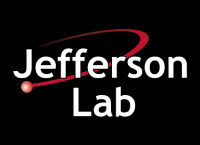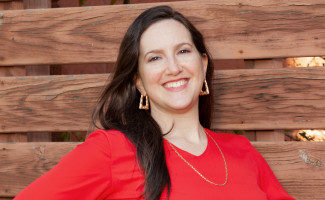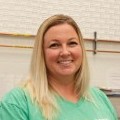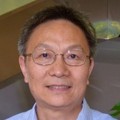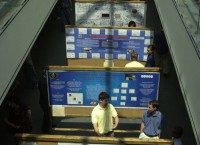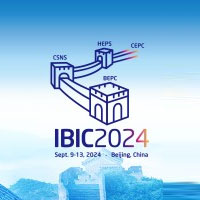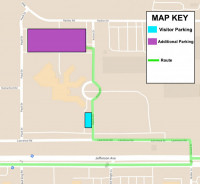New Research and Technology Partnerships Office is being spearheaded by a startup enthusiast
Marla Schuchman has a knack for building connections. Now, she’s putting that skill to work on behalf of Jefferson Lab and its many talented inventors and researchers. As the manager of the lab’s new Research and Technology Partnerships Office, Schuchman will work with inventors and industry to ensure that smart ideas and intellectual property generated in support of the lab’s research mission receives the focus, guidance and outreach it needs to reach the marketplace, or open up new partnerships for Jefferson Lab.
Through her leadership in the office, Schuchman will serve as a dedicated, on-staff resource and advocate, helping connect inventors with industry leaders and end users who can build on their intellectual property. Inventors may include anyone who develops intellectual property in the course of their work, from scientists and engineers to staff administrators and computer programmers. The process of applying newly discovered technology to a product outside of the lab is referred to as “commercialization.”
“If you want to learn whether a technology has practical market value, you have to get out there, talk to people, and generate ideas around potential use cases. Ideally, we do this at the very beginning of the commercialization process, often before people feel ready to talk about what they are working on,” said Schuchman.
Real world applications of advances made by lab staff might include business-to-consumer products, such as a super lightweight tennis racquet made with a groundbreaking nanotube technology. They may include healthcare applications, such as medical devices to diagnose or treat breast cancer. Or they may have industrial applications, such as cryogenic technologies to increase the efficiency and stability of high-power refrigeration units.
Lab committed to seeing research in real-world applications
Schuchman and the Research and Technology Partnerships Office will help bridge the gap that exists between generating new technologies and ideas, and applying them for use in tangible products and services.
“The lab has had commercialization efforts for a long time, with many success stories,” explained Schuchman. “Previously, there was no full-time, 100% dedicated team to shepherd researchers through the process of identifying promising applications for their research, securing a patent and connecting with potential end users of the intellectual property. I am excited to build an office that excels at transferring Jefferson Lab technologies to an eager market.”
As the first member of the Research and Technology Partnerships Office, Schuchman is tasked with developing the process that inventors will use to begin exploring the commercialization potential of their work.
“Making this initiative successful requires a special understanding of how business operations and technology development coexist in the market, particularly with regard to tech-enabled startups,” Schuchman said. “It’s crucial to know how to navigate that early, messy part of the research and development process, so we can streamline the identification of projects with commercial potential.”
A non-linear career built on new (ad)ventures
After earning a B.S. in communications from New York University, Schuchman worked in tourism before moving to Israel, where she held various marketing roles in academia and technology firms. While living in Tel Aviv, she earned an M.S. in management, technology and entrepreneurship—also from New York University. Her time in Israel’s vibrant tech scene led Schuchman to develop a passion for startups and entrepreneurship. For the last decade plus, Schuchman’s professional endeavors have centered around strategic consulting and marketing for technology startups. She has even built a few startups herself, including a childcare technology platform and an online marketplace for creative entrepreneurs in Hampton Roads.
“I have always been interested in novel technologies or services that solve real problems,” she explained. “That’s one of the reasons I’m so excited to be working at the lab—there are many technologies being discovered that have the potential to address critical issues if they are introduced to the market in the right way.”
Schuchman says that she is also looking forward to capitalizing on the lab’s unique technologies and expertise toward developing new partnerships between the lab and other federal agencies or other parts of the Department of Energy. She will also lead lab efforts in support of regional priorities, so that the laboratory can expand on sharing its unique benefits with local communities. She hopes that these efforts open up opportunities for Jefferson Lab to both broaden its research mission and impact on local communities.
How does she plan to help interested researchers become entrepreneurial?
Schuchman will help inventors identify opportunities for their technologies. She will also coach individuals as they navigate the mindset shift necessary to cross over from researcher to entrepreneur. The goal is to help inventors become more familiar with the steps needed to launch a new product or venture, so they can be their own best advocate in promoting their technology. While some researchers will remain deeply involved in their science and technology, others may journey on the path toward business ownership or taking direct responsibility for licensing their own IP.
“There are a lot of hurdles in order to get to market,” said Schuchman. “I’m going to be setting up a roadmap for lab inventors to follow. It will encompass from the time the intellectual property is identified to the point where we can guide it out of the building. An important part of my role will simply be to help inventors get out of the building and talk to people who may be able to use their discoveries and ideas.”
“Becoming entrepreneurial means getting comfortable with taking risks, even if there is a high likelihood of failure. A researcher may have a research mindset--they want to do science, learn and discover for expanding knowledge,” explained Schuchman. “An entrepreneur, on the other hand, identifies that something new is worth creating. They are excited to turn dreams and napkin sketches into reality. The two are most definitely not mutually exclusive. ”
Further Reading
Research and Technology Partnerships Office Paves New Path for Researchers to Work with Industry to Commercialize Technologies
By Carrie Rogers


